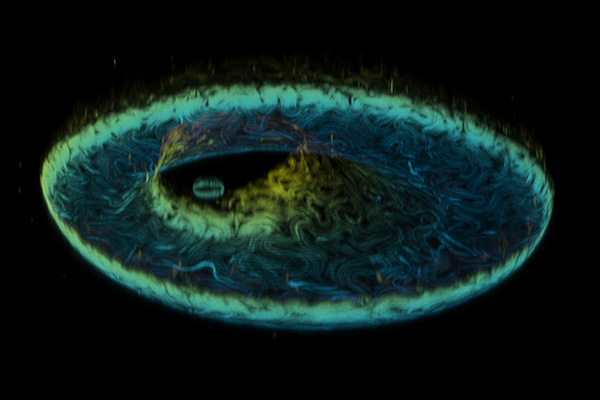
Full Text:
Imagine a tiny donut-shaped droplet, covered with wriggling worms. The worms are packed so tightly together that they must locally line up with respect to each other. In this situation, we would say the worms form a nematic liquid crystal, an ordered phase similar to the materials used in many flat panel displays.
However, the nematic phase formed by the worms is filled with tiny regions where the local alignment is lost--defects in the otherwise aligned material. In addition, because the worms are constantly moving and changing their configuration, this nematic phase is active and far from equilibrium. Researchers have described the results of a combined theoretical and experimental examination of such an active nematic on the surface of donut-shaped--toroidal--droplets. However, the researchers didn’t use actual worms, but an active nematic composed of flexible filaments covered with microscopic engines that are constantly converting energy into motion.Image credit: Perry Ellis/Georgia Tech